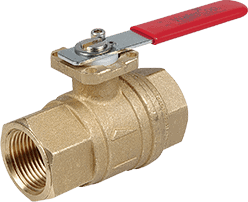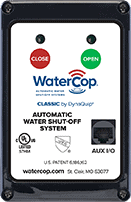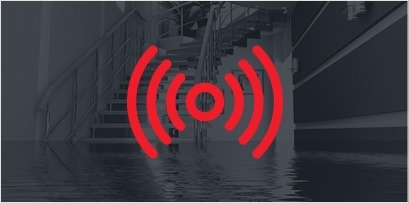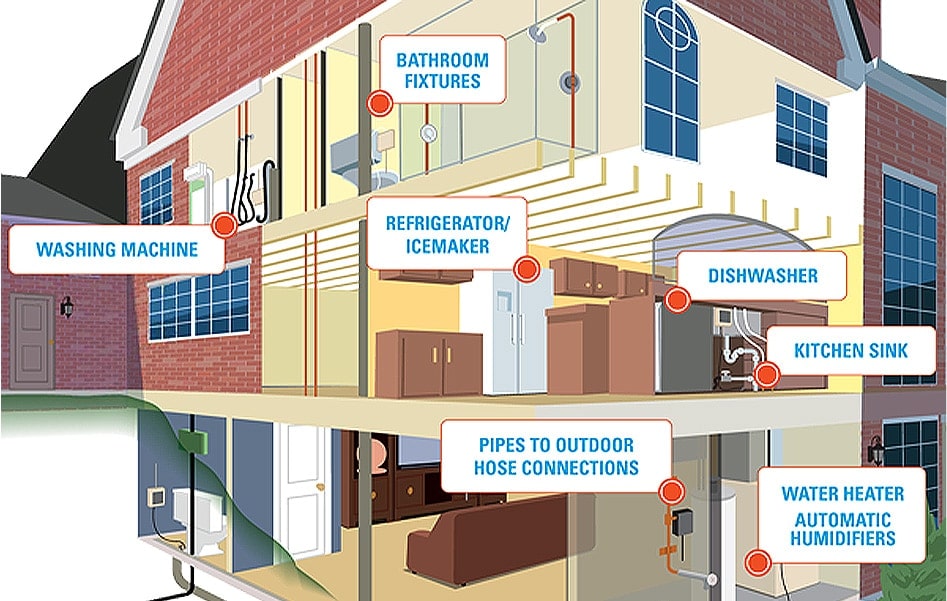How it works
How does WaterCop prevent water damage?
Here's how the WaterCop® and WaterCop® Pro systems work. Special leak detection sensors are placed wherever a leak may occur… under refrigerators, ice makers, dishwashers, washing machines, sinks, toilets, water heaters, etc. If a leak occurs or a hose ruptures in one of those locations, the sensors will sense the water and transmit a wireless signal to an automatic valve on the main water supply line and shut off the flow of water to the entire home thereby stopping any continuous flooding.
WaterCop® and WaterCop® Pro are not just alarms that tell you a flood is occurring in your home. The WaterCop® systems actually protect your home from water damage. The WaterCop® System is composed of two basic parts:

A lead-free, full-flow ball valve with an electro-mechanical actuator that houses a wireless radio receiver which automatically turns off your water supply when any flood sensor detects water or if a low-temperature sensor detects potential freezing.

Flood Sensors, which detect water from a leak or overflow, house a wireless radio transmitter that sends a signal to the WaterCop® to turn off your water supply.
Flood sensors constantly monitor their selected areas for accumulating moisture. When a leak is detected, a sensor will send a radio frequency signal to the WaterCop® unit instructing it to shut off the water supply to the home. The WaterCop® valve will remain closed until it is manually reset.
The WaterCop® full-flow, lead-free ball valve is installed in the main water supply line just downstream from the main shut-off valve in your home. The front control panel of the WaterCop® should be easily visible in order to see what position the valve is in (open/closed). It should also be easily accessible for resetting after a leak has been detected and the water supply has been shut off. The WaterCop® valve requires household electrical power, and the provided power cord must be plugged into a properly grounded power source (115 VAC). Sensors are battery powered but can be optionally powered by AC adapters.
Unlimited sensors supported
Each WaterCop® can support an unlimited number of flood sensors. Additional sensors may be added at any time. A sensor consists of a transmitter (a rectangular box with an antenna) and a sensor probe (a small disc at the end of the wire with two short gold prongs protruding from one side). Flood sensors should be placed in locations where leaks are most likely to occur.

How to use
Suggested Locations
- Washing Machines
- Toilets
- Dishwashers
- Icemakers/Refrigerators
- Kitchen Sinks
- Wet bars
- Automatic Humidifiers
- Bathroom Sinks
- Water Heaters
- Water softeners
- Built-in automatic coffee makers
- Pipes that are prone to freezing (Freeze sensors are also available)


